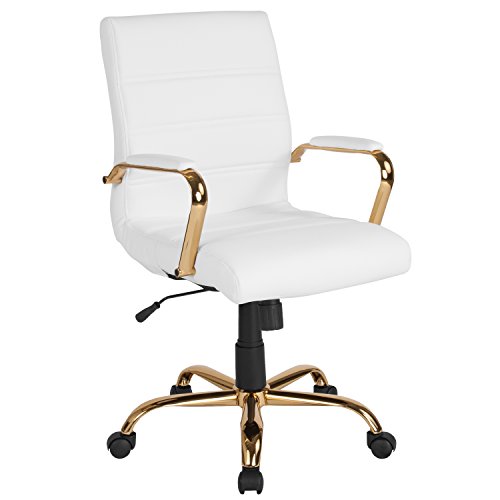In today’s digital age, desk jobs have become the norm for many people. Spending hours at a desk may seem harmless, but long periods of sitting and improper workstation setup can take a toll on your physical health. This is where ergonomics comes in—a science focused on designing and arranging workspaces to fit the people who use them, making tasks more efficient and reducing the risk of injury.
What Is Ergonomics?
Ergonomics is all about creating a work environment that supports comfort, efficiency, and well-being. When applied correctly, it minimizes physical strain and promotes good posture, circulation, and overall health. An ergonomic workspace is particularly important for desk workers because of the health issues that prolonged sitting and repetitive movements can cause, such as musculoskeletal disorders, poor circulation, and fatigue.

Why Ergonomics Is Important for Desk Workers
- Prevents Musculoskeletal Disorders (MSDs) Desk jobs often involve repetitive tasks and static postures, which can lead to musculoskeletal disorders affecting the neck, back, shoulders, and wrists. Ergonomically designed workspaces help reduce the risk of developing these disorders by promoting natural body alignment and reducing strain.
- Improves Circulation Sitting for long hours can hinder blood flow, especially to the lower body, leading to numbness, varicose veins, or even blood clots in severe cases. Ergonomic adjustments can improve circulation and make sitting for extended periods less harmful.
- Boosts Productivity and Focus A well-designed ergonomic workspace can increase productivity. When you’re comfortable, you’re less likely to be distracted by pain or discomfort, allowing you to focus better on your tasks. Additionally, reduced physical strain often leads to fewer breaks and a more consistent workflow.
- Reduces Fatigue and Increases Comfort Proper ergonomics can help reduce fatigue, making it easier to work for longer periods without feeling physically or mentally drained. By supporting your body properly, you can work more comfortably and efficiently.
- Promotes Better Posture Good posture is critical for maintaining spine health. Ergonomically designed chairs, desks, and monitor placements encourage a neutral posture, reducing the risk of long-term spinal issues and related pain.

Ergonomic Items to Improve Your Workspace
Implementing ergonomics doesn’t require a complete office overhaul. Here are some items that can make a big difference:
- Adjustable Ergonomic Chair An ergonomic chair is essential for supporting your spine and promoting good posture. Look for a chair that has:
- Lumbar support to maintain the natural curve of your lower back
- Adjustable height so your feet rest flat on the floor
- Armrests that keep your shoulders relaxed
- A comfortable, breathable seat cushion
- Standing Desk or Desk Converter A standing desk allows you to alternate between sitting and standing, which can improve circulation and reduce the strain on your lower back. A desk converter is a more affordable option that sits on top of your existing desk and can be adjusted for height.
- Foot Rest A foot rest can help keep your legs in a comfortable position and reduce pressure on your lower back. It also encourages blood flow to your lower extremities, which is crucial if you sit for long hours.
- Keyboard and Mouse Support
- Ergonomic Keyboard: A split or curved keyboard can reduce strain on your wrists and forearms.
- Ergonomic Mouse: An ergonomic mouse designed to support a neutral wrist position can prevent repetitive strain injuries.
- Wrist Rest: A gel or foam wrist rest can provide additional support and minimize the risk of developing carpal tunnel syndrome.
- Monitor Stand or Adjustable Arm Your monitor should be at eye level to prevent neck strain. A monitor stand or adjustable arm can help position your screen at the correct height, keeping your neck in a neutral position.
- Anti-Fatigue Mat If you use a standing desk, an anti-fatigue mat can provide cushioning and support for your feet and legs, reducing the risk of joint discomfort and improving circulation.
- Seat Cushion or Lumbar Pillow For added back support, a memory foam seat cushion or lumbar pillow can help relieve pressure on your lower back and improve your sitting posture.
- Desk Bike or Under-Desk Elliptical These devices allow you to keep your legs moving while you work, which can improve circulation and reduce the risks associated with prolonged sitting.
- Blue Light-Blocking Glasses Staring at a screen for extended periods can cause eye strain and fatigue. Blue light-blocking glasses can reduce eye strain and promote better sleep quality.
Tips for Better Ergonomic Practices
- Take Regular Breaks: Stand, stretch, and walk around every 30 minutes to keep your body from getting stiff and to boost circulation.
- Stay Hydrated: Drinking enough water is essential for your overall health and can help prevent fatigue.
- Practice the 20-20-20 Rule: To reduce eye strain, look away from your screen every 20 minutes and focus on something 20 feet away for 20 seconds.
Conclusion
Ergonomics is more than just a buzzword; it’s a crucial component of a healthy and productive work environment. By making small adjustments to your desk setup and incorporating ergonomic accessories, you can prevent long-term health issues, boost your productivity, and feel more comfortable throughout the workday. Don’t underestimate the power of a well-designed workspace—your body will thank you for it!





